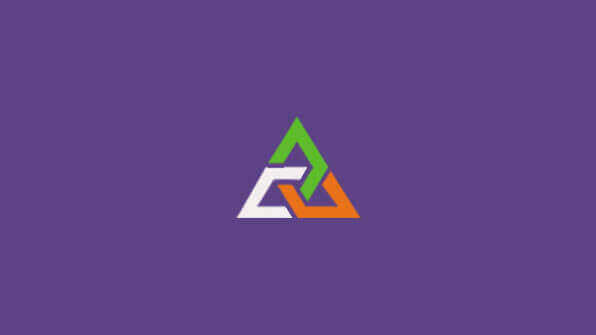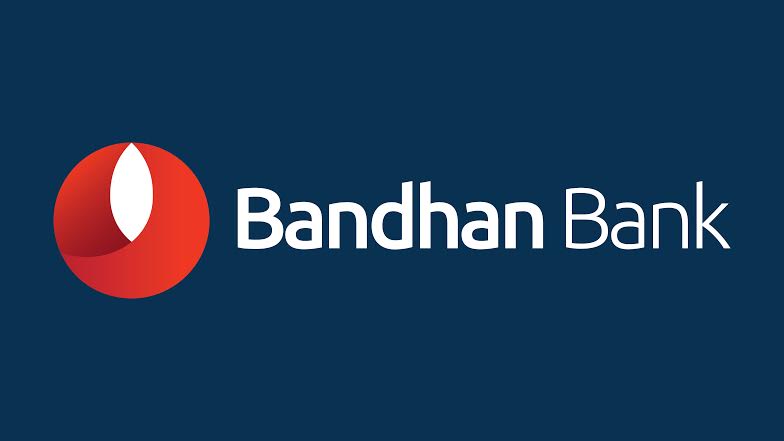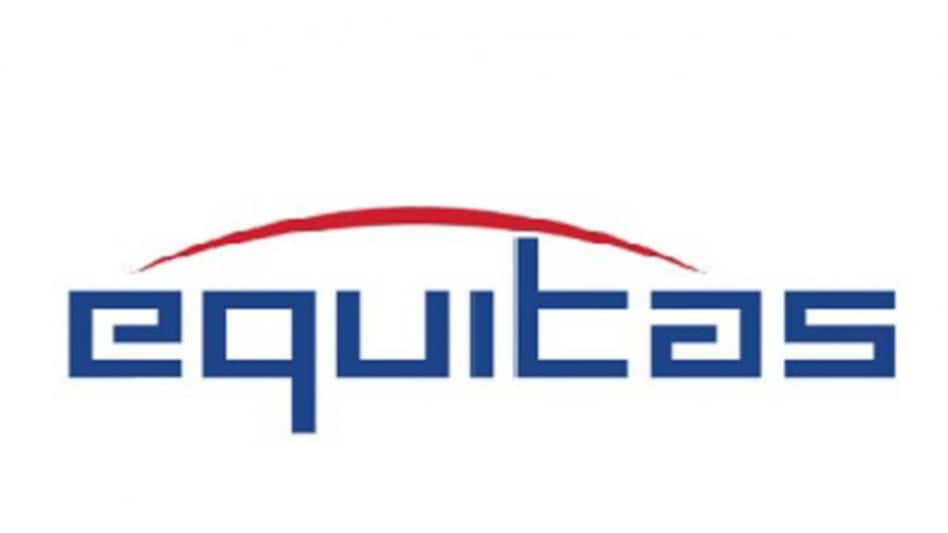Top 10 best Microfinance companies in India 2023

In India, “micro financing” was first promoted in the 1980s as a means of eradicating poverty and empowering women. The microfinance industry in rural India confronts difficulties relating to accessibility, notwithstanding its considerable potential.
People who struggle to access standard financial services are given access to microfinance, a type of banking service. It is targeted toward low-income and unemployed groups. Loans, creating bank accounts, and micro insurance are among the products and services offered by organizations that support microfinance. By providing more financial stability in developing countries like India, where government financial institutions fall short of the demands of the rural poor, microfinance may help small businesses grow.
The lack of official job documentation or collateral that the poor may supply when requesting loans is the main reason that traditional banking institutions in India refuse to lend to the rural poor. Small loan savings accounts come with a high level of risk and transaction expenses, which is problematic for banks as well. The only option left to the impoverished in this situation is to borrow money at hefty interest rates from local moneylenders.
MFIs were created with a specific purpose in mind. The first goal was to help in the distribution of resources to the less fortunate sections of society. The additional objectives were empowering women, eliminating poverty, and giving impoverished people access to jobs, chances for self-employment, and skill development. The rural population of India receives finance, insurance, and financial education via MFIs, which also operate in a structured group manner.
Despite their admirable intentions and high objectives, MFIs have failed in their attempts to extend their microfinance programs to the country’s rural areas because they have given less consideration to the breadth, excellence, and feasibility of these financial services. India must also establish a robust structure of rules and regulations for the microfinance sector. The government’s numerous efforts and the focus it is placing on the Aatmanirbhar Bharat program, however, are largely to blame for the recent boom in this business.
In FY23, microfinance loans increased by 24%
By the end of last June, the loan portfolio of micro-finance institutions (MFIs) had grown by 24% year over year (YoY), from Rs 2.22 trillion the previous June. According to Sa-Dhan, the self-regulatory organization (SRO) for microfinance, the loan book increased sequentially from Rs 2.62 trillion at the end of March 2022 (Q4Fy22). After overcoming the effects of the coronavirus, according to Sa-Dhan CEO Jiji Mammen, the industry is back on track. Despite being preoccupied with putting the Reserve Bank of India’s policies into effect during Q1, it recorded strong growth.
Although the sector’s funding flow has increased, several smaller MFIs still have trouble getting bank financing. According to a statement from Sa-Dhan, the organization is attempting to close this gap. Aside from banks, the portfolios of other microlenders experienced double-digit growth. MFIs that provide non-bank financial services had an increase of 35.18%. Small finance banks saw a YoY increase of 27.66%. Disbursements increased significantly from Rs 27,328 crore in the same quarter of the previous year to Rs 57,842 crore in April-June 2022 (Q1Fy23). However, when lenders adjusted their distribution policies following the new restrictions, Sa-Dhan noted, disbursement was down around 35% from the previous quarter (Q4Fy22).
Loan recovery increased from the previous quarter and in certain states reached nearly 99 percent. There are still certain regions, nevertheless, where collecting is below average. For instance, Assam has to collect an effectiveness of between 50% and 55%. At the end of June 2022, the sector’s non-performing assets were about 12% and 9% for NBFC-MFIs.
What is India’s microfinance history?
In India, the Gujarat-based Self-Employed Women’s Association (SEWA), which founded SEWA Bank in 1974, was the first organization to promote microfinance. Since that time, this bank has offered financial support to anyone looking to expand their enterprises in rural regions.
The Kudumbashree Poverty Eradication Mission, which was started in the state of Kerala in 1998, is an example of a successful effort. Women from rural and urban regions come together in this female-led community organization of Neighbourhood Groups (NHGs) to fight for their rights and support their empowerment. Through these NHGs, women work on a range of subjects, including agriculture, nutrition, and health. They can work under this plan while earning money and applying for microcredit. Such modest efforts are fostering financial independence in disadvantaged places.
To serve India’s sizable rural population, microfinance institutions are required. The primary goals of microfinance in India should be to empower women, advance socioeconomic development at the local level through a community-based strategy, and raise household income. Running a microfinance program in rural India has several difficulties, much like putting into practice any transformative initiative.
The Advantages of Microfinance
Providing instant cash
The microfinance system helps to promote more adaptive behavior across the economy. It makes it easier for households to operate effectively and efficiently overall. Additionally, it helps to lessen poverty in these households. It gives entrepreneurs the ability to run and expand their businesses concurrently. It offers the business the possibility to acquire immediate resources for carrying on with operations. Additionally, it encourages money creation, increasing one’s access to funds in times of need.
Credit availability
Since the credit amount is lower when they do so, the larger banks avoid lending to the economically weaker regions. Additionally, big banks don’t lend money to persons with little to no assets. Micro finance steps in to help in this circumstance since it was established on the notion that small sums of loans may be a beginning to ending the cycle of poverty. Women frequently lack the necessary identification documents and ownership rights to their homes or other property, which makes it challenging for them to access traditional financial institutions.
Better Loan Repayment Rates
Women are more likely than males to make loan payments on time, according to statistics, hence microfinance businesses usually target women as possible clients. They not only provide women more power but also provide lenders with the safest investment options. Women are more likely than men to display honesty and integrity, with a proportion of 55% vs 48%. Microfinance institutions have an overall repayment ratio of more than 98% even though there are regularly many accounts that are past due since they specifically target women as credit borrowers in acknowledgment of this.
Cares for those who are overlooked
Women, individuals with disabilities, the unemployed, and those who must meet their basic requirements for money are the groups of people who use microfinance products from microfinance companies in the greatest numbers. In terms of producing up to 66% greater returns on invested capital and 42% more returns on sales, companies with a female board of directors beat those with a male-only board. Even in industrialized countries, women have significant leadership roles in industry and serve as role models for others looking to launch their businesses.
The chance to obtain an education
Children from economically disadvantaged homes are either not enrolled in school or skip school days because their parents, who are largely from farming families, want their children to work to earn money and support the family financially. Microfinance products can help these youngsters by giving them funding to support their family’s financial requirements, allowing them to continue their education. Assume a child obtains an eight-year formal education. In such a situation, her odds of marrying young are four times lower, her chances of adolescent pregnancy are lower, and her chances of finishing school are greater, making them more likely to attain a good-paying job or higher education.
The possibility of future investments grows.
Poverty is a never-ending cycle. A scarcity of money leads to a shortage of food and water, which leads to a lack of hygienic living conditions, hunger, and disease, which leads to people not working and, therefore, a lack of money. Microfinance tries to stop this cycle by increasing the availability of money.
The availability of funds indicates that fundamental necessities are addressed. As a result, investments may improve sanitation, create better wells, and provide better health care, allowing people to be productive rather than chronically ill. Children may finish their education, and as their prospects of survival improve, the average family size shrinks. All of these point to the likelihood of future investments since individuals are now able to fulfill their fundamental demands.
Real Job Creation
When entrepreneurs borrow money from microfinance organizations to launch their enterprises, they create jobs for others. Increased employment supports the local economy by circulating more money via local companies and services.
Significant Economic Benefits
Participating in microfinance programs provides access to improved nutrition, increased consumption, and consumption smoothing. The economic rewards in this case are not monetary but rather result from stability. The fact that microcredits bring satisfaction is evident in the high payback rates. As a result, at its heart, microfinance virtually always has a beneficial impact. As a result, microfinance offers several advantages and is a crucial instrument in attempting to break the cycle of poverty.
The disadvantage of microfinance
It does not reach the deserving poor.
Because they are viewed as dangerous, those who are below the poverty line are neglected by microfinance delivery schemes. When choosing recipients for the program, there is prejudice. The program’s administrators choose financially secure people as the program beneficiaries to properly administer the program and achieve greater payback rates. The majority of the impoverished are too risk-averse to borrow money for future investments. Therefore, they will only receive a small amount of profit from the microfinance programs.
Limited spread in the poorer states
In states where a sizable portion of the population lives in poverty, the coverage of microfinance programs is low. Implementing microfinance programs is a challenge for states like Orissa, Bihar, Chhattisgarh, Jharkhand, Madhya Pradesh, and Uttar Pradesh. The assistance provided by the individual state governments, the local customs and culture, and the concentration of MFIs in these states all have a role in how well microfinance programs are implemented.
High-interest rates
Because borrowers are interest-sensitive, an increase in interest rates results in a reduction in their ability to borrow. High interest rates are therefore unproductive and worsen the financial situation of low-income individuals. Charging extremely high-interest rates to less fortunate customers is likewise exploitative.
The microfinance industry’s interest rates don’t appear to be well regulated. Interest rates are regulated by some MFIs. However, they could levy transaction fees, which raise the expense of borrowing and reduce its appeal. In contrast to the banking industry’s 9–10% cap, MFIs may charge 11%–124% in annual interest rates. These interest rates do, however, change based on the MFI’s lending guidelines and practices.
Low depth of outreach
Although the program’s reach is growing, few loans are still being taken out. It is insufficient to meet the demands of the impoverished in terms of money. Rarely does the loan’s length exceed a year. Borrowers cannot use the loans for productive reasons due to the small loan amounts and the brief loan terms. Instead of borrowing money to make investments, they typically use these modest loans to handle liquidity concerns. The availability of microloans to individuals in rural and urban areas, the rules that go along with them, and the provision of fundamental training for the underprivileged in these places on how to use these loans for constructive reasons should be our main priorities.
- Fusion Micro Finance Limited
The business was established in 2010 to offer micro-and small-business sector finance at a reasonable price. With loans totaling more than INR 1.3 billion spread throughout multiple Indian states, it has become one of the country’s top microfinance organizations and is still expanding quickly. Due to a lack of collateral, Fusion Micro Finance Limited provides loans to microbusinesses and entrepreneurs who otherwise wouldn’t be able to. The company provides a range of financial services, including short-term working capital loans, loans backed by assets, gold loans, and other insurance products.
The business is a pioneer in the microcredit industry. Its ten-year mission to enable women from all backgrounds to achieve financial independence is now fulfilled. The firm has received the “Sangam” award from the Federation of Indian Chambers of Commerce and Industry (FICCI) in New Delhi for the 2014 calendar year. In addition to this new project, the corporation intends to introduce its “Shubh-Karya” housing financing program, under which it would lend money to people and organizations so they may buy or build homes.
- BSS Microfinance Limited
Currently serving as Kotak Mahindra Bank Limited’s “Commercial Correspondent” is the microfinance company BSS Microfinance Limited. It started operating as a trust in 1999. Since April 2008, when the firm took over the Trust’s microfinance operations, it has been providing microloans to women from economically underprivileged areas of society. These loans are intended to help underprivileged women start businesses that would generate revenue, improving their social circumstances.
The four states of Maharashtra, Karnataka, Tamil Nadu, and Madhya Pradesh presently provide BSS Microfinance. By offering microfinance services to women, who subsequently pass them on to their families, the firm hopes to reduce poverty. The organization also hopes to promote greater financial management, greater profitability, and an improved quality of life. Only women receive loans from BSS Microfinance through the Group Lending Program.
- Annapurna Finance Private Limited.
A microfinance organization called Annapurna Finance Private Limited was established in Odisha, India, in 2009. It provides loans to over 50,000 consumers in all Indian states and has a credit portfolio worth INR 70 crore (USD 12 million). The mission of Annapurna Microfinance is to provide the underprivileged with the tools they need to manage their own lives. The business provides a variety of financial services and products, including loans, deposits, and insurance, to the poor community.
AMPL was established as a non-banking financial firm with a founding investment of INR100 million (NBFI). Its branch network has expanded over time to encompass more than 45 locations around the country. The impoverished can create long-lasting livelihoods by receiving microcredit from a private limited corporation called Annapurna Finance.

By giving them the means to earn more money and live independent lives, it seeks to empower women and reduce poverty. Women in isolated communities who lack access to retail banking services or who have been denied credit by banks and moneylenders because they lacked collateral are given collateral-free loans by the firm.
- Arohan Financial Services Limited.
In 2006, the Kolkata-based business Arohan launched its microfinance division. Finally, IntelleCash Microfinance Network Company Pvt Ltd finally purchased it in September 2012 and currently controls 56% of Arohan. IntelleCash is a division of the investment banking and consulting firm Intellectual Capital Advising Services Pvt. Ltd. Following the acquisition, Arohan incorporated the microfinance portfolio of IntelleCash.
For consumers that are struggling financially, Arohan offers a variety of goods. The two categories of financial goods are credit and insurance. Insurance products include healthcare and life insurance coverage provided and underwritten by certain Indian insurance firms with which Arohan has tie-ups. Credit goods include income-generating loans and other loan products for various household needs. Term loans from the corporation are also available to microfinance organizations.
East India’s largest NBFC MFI is Arohan Financial Services Limited, a division of The Aavishkaar Group. As of September 30, 2020, the business had 2.21 million end customers and operated in 17 states. Arohan is one of the Top 100 Best Workplaces in India 2020, one of the Top 25 in the BFSI industry, and one of the Best Workplaces in Microfinance India 2020, according to the Great Place to Work Institute.
- Cashpor Micro Credit
Cashpor Micro Credit is owned by Cashpor Financial & Technical Services (CFTS). It is a Varanasi-based microfinance organization that targets poverty and identifies rural women in eastern Uttar Pradesh, Bihar, and Chhattisgarh to provide them with microcredit services so they may make money. Cashpor Micro Credit has a dual lending strategy of direct loans and banking correspondence lending and is not obliged to register with the Reserve Bank of India. Under the bank correspondence technique, Cashpor acts as a sourcing agent for banks; loans originate directly in the bank’s records.
In exchange for a sourcing charge, Cashpor provides first-loss default insurance on the portfolios of its sources (the gap between the interest paid by the borrower and the interest paid to the bank). The company was operating through a network of 341 locations across 31 districts as of December 31, 2013. Professor David Gibbons established Cashpor, which uses the Grameen Bank lending model to offer microcredit in Uttar Pradesh, Bihar, and Chhattisgarh.
- Asirwad Micro Finance Limited.
A Non-Banking Financial Corporation (NBFC-MFI) with headquarters in Chennai, Tamil Nadu, Asirvad was founded in 2007. The business was started to help the less fortunate members of society become financially independent. The main reason for starting Asirvad was to give people from these groups of society more influence, which led to economic inclusion and aided in the growth of the nation.
The microfinance organization has been providing loans to low-income people who have no way of accessing bank loans to reduce poverty in the nation. It offers women from low-income households microfinance loans through its network of stores in 22 Indian states. Following the requirements of the RBI, Asirvad Microfinance offers microloans to approved borrowers. By employing these microloans for business, commerce, or service, borrowers can use them to supplement their income. The organization provides loans ranging from Rs 10,000 to Rs 25,000 depending on the needs of specific clients.
The Companies Act of 1956 saw the incorporation of Asirvad, which is currently worth more than Rs 100 crore. Manappuram Finance Limited recently purchased the business, giving them an 85% ownership stake in Asirvad.
- Fincare Small Finance Bank Limited
In July 2017, Fincare Micro Finance Institution changed its status to a small finance bank. After receiving their final license from the RBI and starting their Fincare Small Finance Bank was created in May 2017 by the merger of Future Financial Services Private Limited and Disha Microfinance & NBSP Private Limited. When the bank first began operations, its primary objective was to actively involve more affluent groups in facilitating financial inclusion for underbanked and unbanked consumers.
The bank’s corporate headquarters are in Bengaluru, Karnataka, and its registered office is in Ahmedabad, Gujarat. Fincare Small Finance Bank is a brand-new type of retail bank with a “rural” focus that is based on honesty, technology, and trust. In the first quarter of 2020, the bank was added to the Reserve Bank of India Act, 1934’s Second Schedule. As a consequence, the bank has now earned the title of Scheduled Commercial Bank, which denotes outstanding governance.
- Bandhan Financial Services Private Limited.
Indian commercial banks Bandhan Bank focuses on under-banked and underpenetrated industries. Bandhan Bank is India’s first instance of a microfinance organization converting into a universal bank. A non-governmental organization (‘NGO’) called Bandhan Konnagar was established in 2001 to help financially and culturally underprivileged women in rural West Bengal.
In 2009, the NGO ceded ownership of its microfinance business to Bandhan Financial Services Limited (BFSL), where it now operates. BFSL started its microfinance business in 2006. To earn non-interest revenue and satisfy the demands of its clients, the bank offers a range of other banking services and products in addition to loan and deposit products. The bank now offers a wide variety of asset and liability solutions for both conventional banking and micro banking. Retail loans, which contain a sizeable portfolio of microloans, as well as micro, small and medium enterprises (‘SMEs’), and small enterprise loans, are some of its asset products.
As of March 31, 2021, there were 5310 total banking locations for the bank. With a total of 487 ATMs spread out over the nation, the network consists of 1147 branches, 4163 banking centers, and 1147 other locations. The underserved East and North East regions of India are where Bandhan Bank is most prevalent.
- ESAF Small Finance Bank
It is an Indian small finance bank that was founded in March 2017 and offers banking services and microloans to the unbanked (formerly ESAF Microfinance and Investments Pvt. Ltd.). Evangelical Social Action Forum served as the name of the NGO that ESAF Microfinance first operated in 1992. ESAF Bank, based in Thrissur, Kerala, was formerly a microfinance organization and a non-banking financing firm (NBFC-MFI).
Since its founding, it has worked to provide non-credit financial services to the less fortunate groups of society by granting them access to financial goods and services like Cash Credit and Mobile Phone Loans, Medical Insurance, Crop Insurance, Education Loans, Business Loans, Agriculture Equipment Loans, etc. The bank provides a range of modern financial services, including ATMs, debit cards, safe deposit boxes, internet banking, mobile banking, and others. The Hrudaya Deposit Scheme, free video chatting in branches, and door-to-door delivery are just a few of the unique advantages offered by ESAF Small Finance Bank.
- Equitas Small Finance Bank
With its headquarters in Chennai, Tamil Nadu, Equitas Small Finance Bank is a wholly-owned subsidiary of Equitas Holdings Ltd., which was formerly known as Equitas Micro Finance Ltd. The firm was founded to offer microcredit to those who couldn’t get financing from traditional banks or financial institutions.
The firm wants to provide these customers with financing at a reasonable price and to generate respectable returns on investment to continuously draw in mainstream capital. In 2016, Equitas Small Finance Bank Limited was established in India to offer financial services to the less fortunate segments of society. With more than 400 branches distributed throughout 22 states and 2 union territories, Equitas is one of the top small financial institutions in India. Equitas is India’s largest organized microcredit organization by branch network and client base. It invented the idea of small financing in the nation.
It is the fifth bank overall and the first small finance bank in India to acquire a banking license from the RBI. The bank intends to be one of India’s top providers of financial services to MSMEs (small and medium-sized firms) and rural customers, with a focus on underserved demographics.
edited and proofread by nikita sharma




